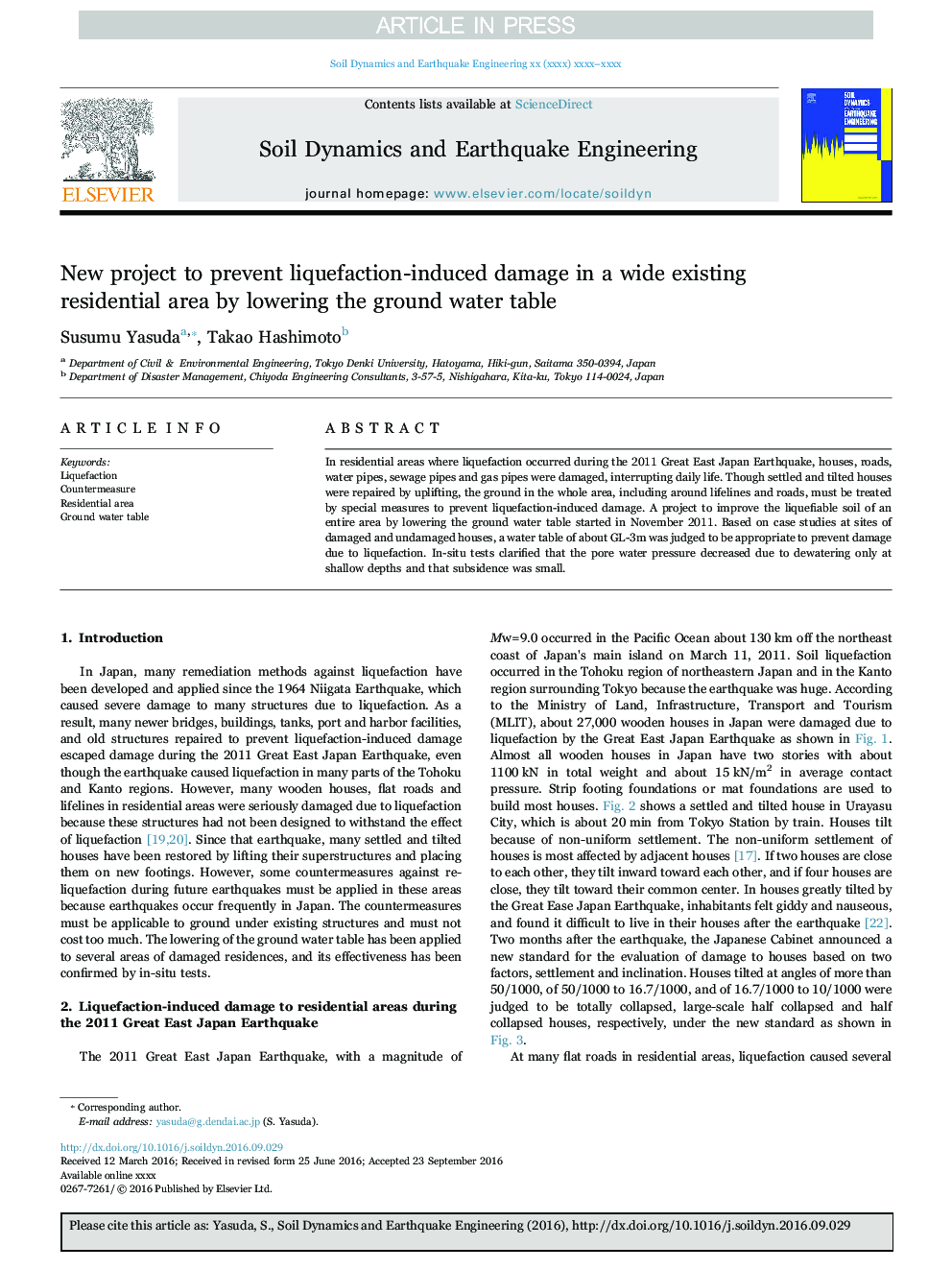| Article ID | Journal | Published Year | Pages | File Type |
|---|---|---|---|---|
| 4927374 | Soil Dynamics and Earthquake Engineering | 2016 | 14 Pages |
Abstract
In residential areas where liquefaction occurred during the 2011 Great East Japan Earthquake, houses, roads, water pipes, sewage pipes and gas pipes were damaged, interrupting daily life. Though settled and tilted houses were repaired by uplifting, the ground in the whole area, including around lifelines and roads, must be treated by special measures to prevent liquefaction-induced damage. A project to improve the liquefiable soil of an entire area by lowering the ground water table started in November 2011. Based on case studies at sites of damaged and undamaged houses, a water table of about GL-3m was judged to be appropriate to prevent damage due to liquefaction. In-situ tests clarified that the pore water pressure decreased due to dewatering only at shallow depths and that subsidence was small.
Related Topics
Physical Sciences and Engineering
Earth and Planetary Sciences
Geotechnical Engineering and Engineering Geology
Authors
Susumu Yasuda, Takao Hashimoto,
